Celebrating Quinceañerx: Artist Spotlights
This June, TAC is celebrating 15 years. So for this time we're putting on hold our monthly Fiber Picks to focus on the exhibition we're hosting at our studio, Celebrating Quinceañerx, curated by two staff members: Romi & Ale.
The exhibiting artists, some old friends, some new, have joined us to celebrate this quinceañerx, with corronchada, huachafería, flashiness, pomposidad, flamboyance, glitter y como unx adolescente desenfrenadx. We want to highlight the festivity's significance of transition while giving space for tradition to evolve beyond the gender binary, and redefining notions of masculinity and femininity.
The series of selected artworks represents something beyond a traditional aesthetic of simplicity and whiteness, breaking away from a colonialist and racist norm of beauty, embracing the uniqueness of each piece, while in its collectivity create an atmosphere that recalls a colorful teenager spirit. Some works put us in a nostalgic mood of the years past, remembering our adolescence and the passionate years when we were guided by our hearts, while others bring us excitement and serve as a call to the unbridled energy we want to preserve for eternity.
As a teaser for the exhibition and to invite you to join us this Sunday for our main celebration, here is a look into some of the works and the artists' statements behind them.
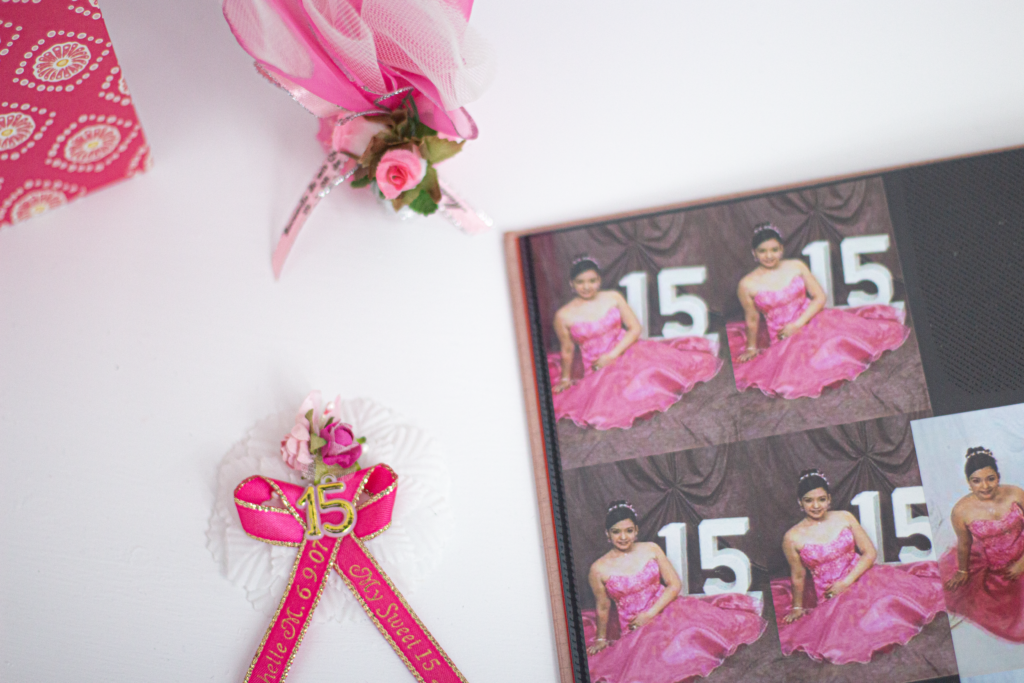
Michelle McVicker
Mis Quinces / Sweet 15, 2007
Assemble of photos y recuerdos
"Inspired by the Instagram page Quinceañera Archives, I compiled mementos and archival material from my own quinceañera as a first generation Colombian-American. Despite the lack of Latinx sartorial representation within fashion museology, I view this assemblage as a form of self-preservation, a way to combat institutionalized erasure. Visual artist and founder Samantha Cabrera Friend describes Quinceañera Archives as a visual repository, fostering public dialogues and community-driven research around the historical importance of one’s lived experience. Since the height of their popularity in the 1980s and 90s, many first and second generation Latinx are intentionally choosing unconventional celebrations that uniquely represent the intersectionality of their cultural identities. As the only US born person in my family, "Mis Quince" was a formative way for me to express and validate my bicultural identity."
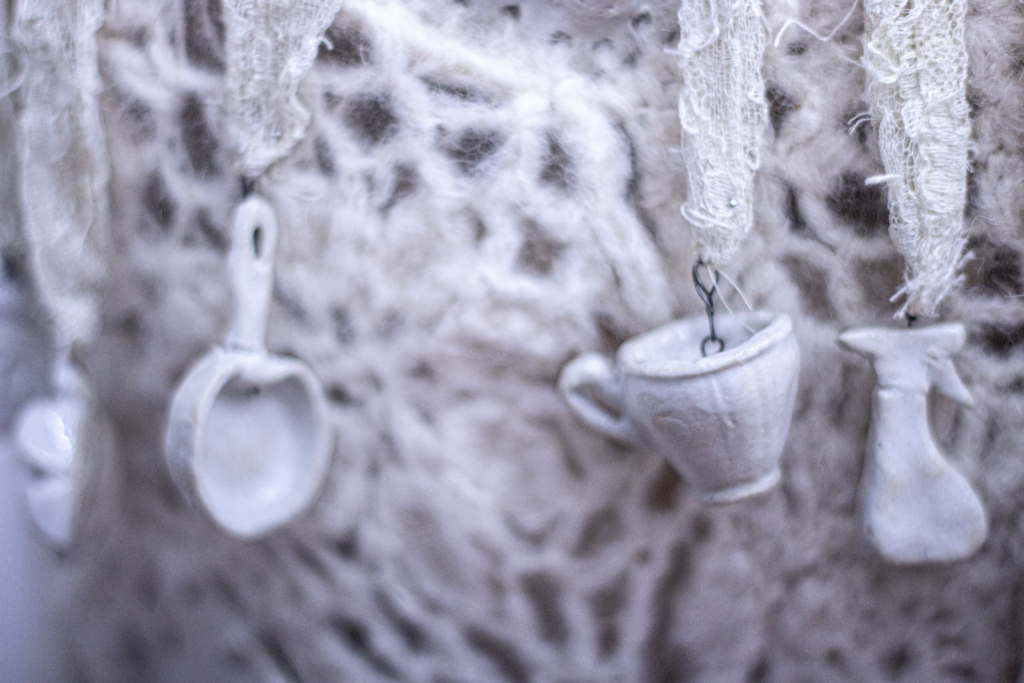
Itala Aguilera
Ama de Casa (Housewife), 2019
Merino wool yarn, ceramic with high temperature glazes, cotton lace gloves
Size 6
"This dress is part of "Ayúdame a Descansar", a collection of wearable pieces based on the interpretation of a dream I had about my family, the symbols extracted from the analysis are translated into textures, shapes, and materials. This wedding dress is based on my late grandmother and her obsession with hoarding resin figurines and other objects, which I perceive as a way to take over the household that imprisoned her after getting married. I cast some of her figurines and reproduced them in ceramics, then crocheted them together. Both the act of crocheting and making ceramics have a ritualistic aspect to them: crocheting is the repetition of stitches like words in a prayer, while clay (earth) is a material used for religious rituals in many cultures all around the world. By using these materials I wanted to reflect on the relationship between the religious rituals, the social rituals (like marriage or quince años), and the neurotic day to day rituals (like hoarding objects or crocheting a million "chambritas"), that define women's lives (in my culture and family history, specifically)."
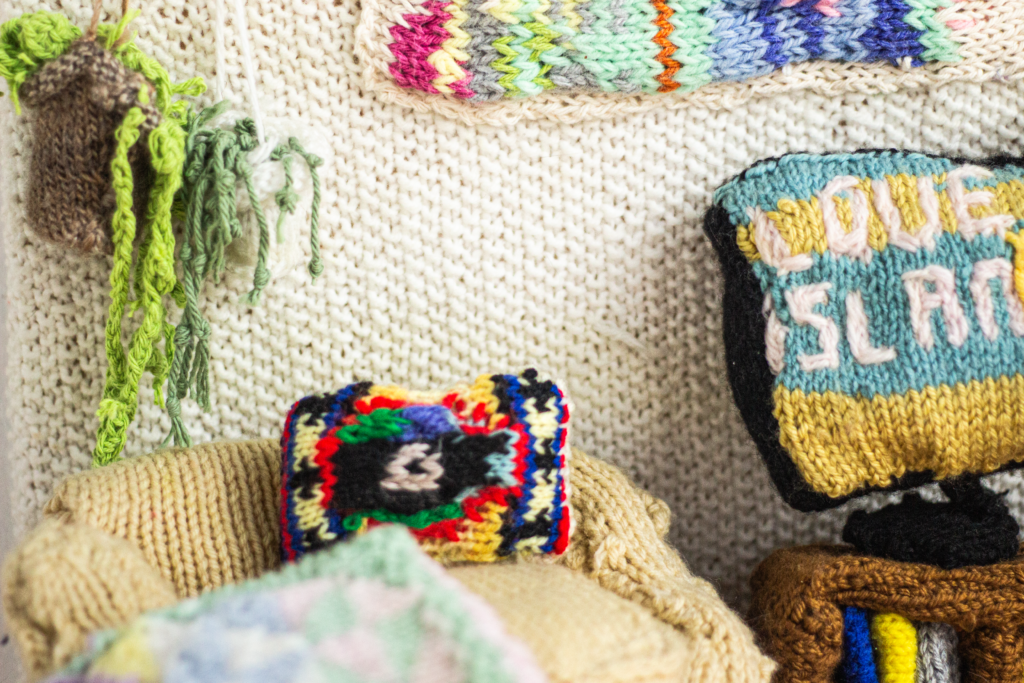
Leda Brittenham
The Living Room
Hand knit acrylic yarn and plywood
"In my fiber work, I use the practice of knitting as a meditation on work and home. The labor-intensive, repetitive nature of this craft connects me to women in my family and women throughout knitting’s long history. I often use leftover yarn from my grandmother’s projects that she has given to me over the years. This material has borne witness to the life of my family and has a history all its own. Through the creation of this work, I consider its life-cycle from raw, new product full of creative possibilities, to forgotten background character, to clutter to be doled out to grandchildren."
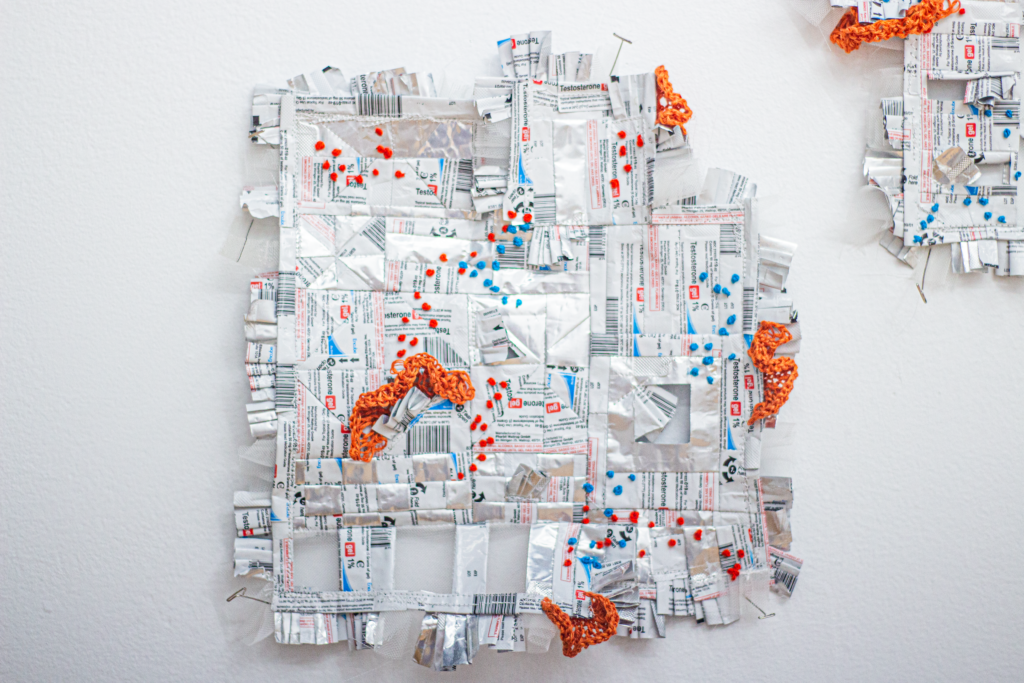
Milo K. Godfrey
Second Puberty, 2024
Testosterone gel packets and mesh, embroidered with silk floss
"In an effort to cope with change, I collect, sort and put routine objects together until they make sense. I find optimism within discomfort, and engage with my textile art practice as an avenue to express what it feels like to exist in this body."
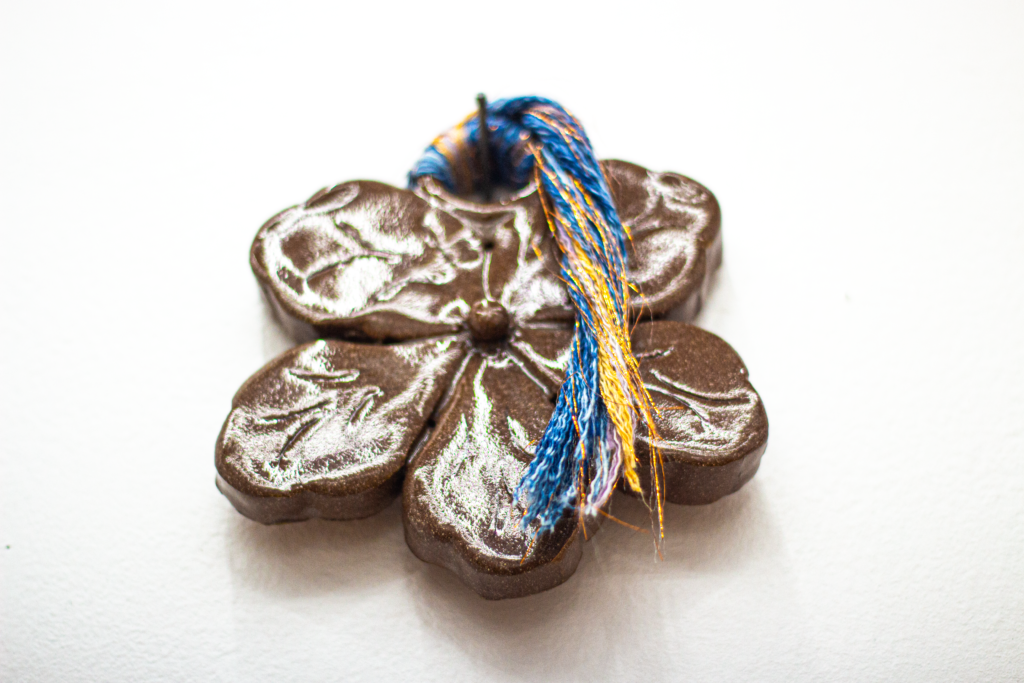
Meena Satnarain
Childhood talisman, 2021 - 2024
Glazed terra cotta, naturally dyed cotton, metallic fibers
"Terra cotta is a beautiful material to work with. The red color is from iron oxides and simply handling the material gives a visceral connection with the earth. I created a large scale replica of one of my mother's jewelry pieces that she used to wear as a teenager in Guyana and I now wear as a living tribute to her and the strength of women in my culture. This piece is a dedication to the enduring spirit of childhood."
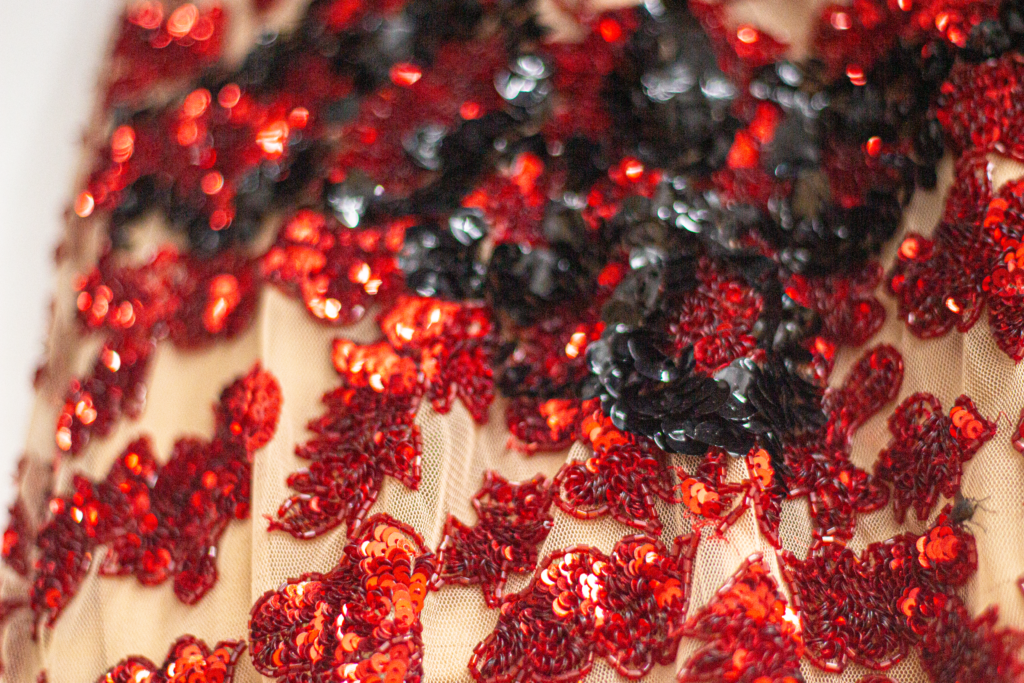
Laura Trujillo Salazar
Abuela's Closet, 2023
Dress and Bioplastic embellishments made out of gelatin, glycerine, water, food coloring
"Trough this sequined dress I presents the politics and art of the embodiments of Latinidad, and question how some of these representation are celebrated and gained cultural value, while others are ridiculed, deemed as low class, sexually deviant or damaging to the public image of our communities. While I had a deep admiration for my granma's style people always commented on how "excessive" her clothes where. Is “excess” an inherently negative characteristic? What attributes excess?"